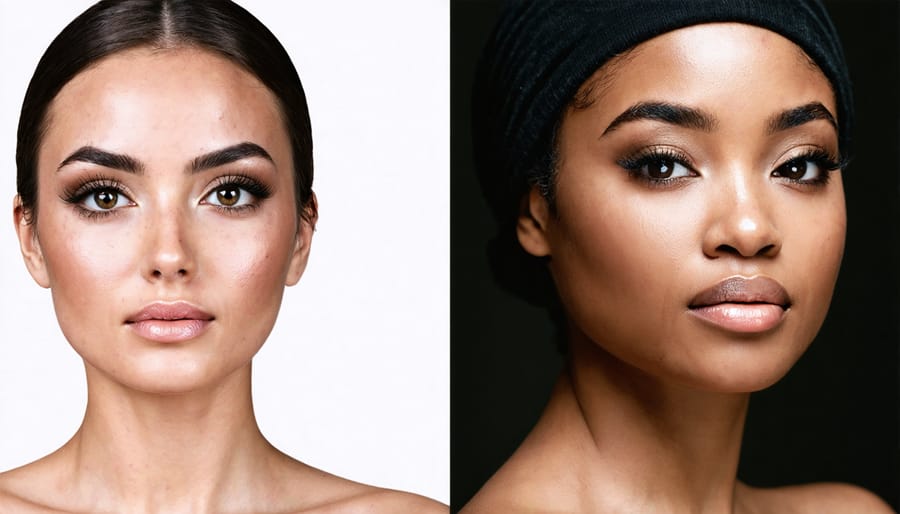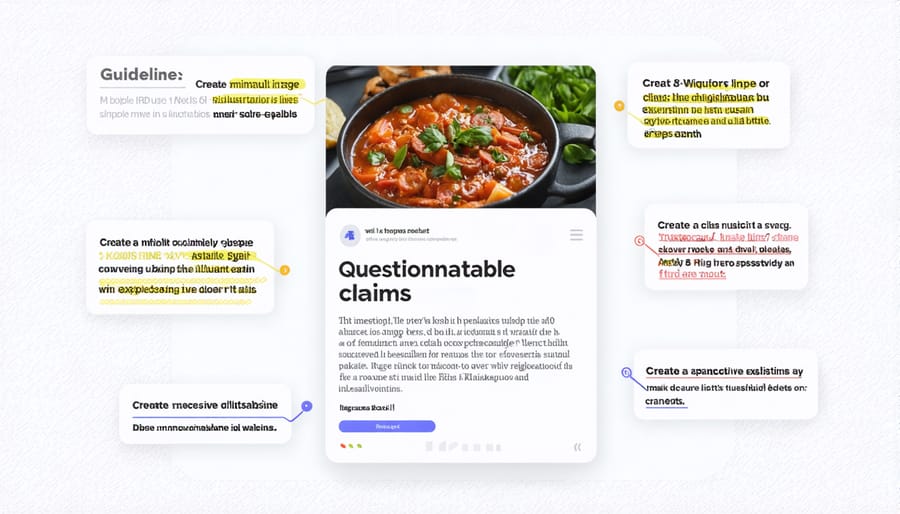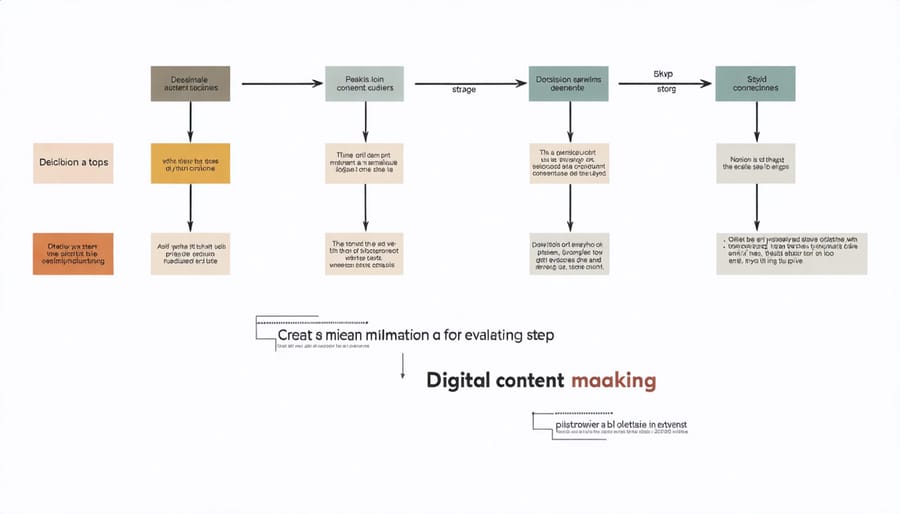
Question everything you scroll past on social media – that perfect “no-filter” selfie, the miracle weight loss story, or the latest viral health claim. In today’s digital landscape, establishing smart digital boundaries starts with developing a healthy skepticism.
Critical thinking isn’t just about being cynical; it’s about becoming a skilled investigator of your daily content consumption. When that perfectly curated Instagram post promises life-changing results, pause. Ask yourself: Who benefits from this information? What evidence supports these claims? Are there conflicting viewpoints being silenced?
Think of your mind as a carefully curated gallery rather than an open warehouse. Every piece of information that enters should be examined, questioned, and evaluated before earning its place on your mental shelves. This thoughtful approach to digital consumption doesn’t just protect you from misinformation – it empowers you to make better decisions in every aspect of your life.

Why Your Favorite Beauty Hack Might Not Be What It Seems
Red Flags in Beauty Content
When scrolling through beauty content, watch out for these telling signs that should make you pause and think twice. Be wary of dramatic before-and-after photos, especially those featuring extreme lighting changes or obvious filters. Question product reviews that seem too perfect or creators who never acknowledge potential drawbacks of products they’re promoting.
Pay attention when influencers constantly push new “must-have” products without showing consistent use of previous recommendations. Be skeptical of miracle claims promising overnight results or solutions that work for “everyone.” Consider it a red flag when content creators don’t disclose paid partnerships or consistently delete questioning comments.
Remember those viral “skincare hacks” using household items? While tempting, they often oversimplify complex skin concerns. Trust your instincts when something feels off – whether it’s unrealistic promises, aggressive marketing tactics, or advice that contradicts established skincare science. Your skin (and wallet) will thank you for being discerning.
Quick Credibility Checks
When scrolling through your favorite beauty influencer’s latest recommendation, take a moment to run these quick verification checks. First, look for multiple, unedited before-and-after photos from real users – not just the perfectly lit promotional shots. Check the dates on reviews and posts to ensure they’re recent and reflect current formulations. Cross-reference product claims with reputable skincare websites or dermatologist blogs for scientific backing.
Look out for disclosure statements about sponsored content or affiliate links. While these don’t automatically invalidate recommendations, they provide important context. Search for the product or trend on independent beauty forums where everyday users share their experiences. Pay attention to detailed reviews that mention specific results, timeframes, and potential drawbacks – these tend to be more reliable than vague, overly enthusiastic praise.
Remember, genuine results usually take time, so be skeptical of miracle claims promising instant transformations. When in doubt, save the link and revisit it after a few days to make a more objective decision.
Recipe Reality Check: Essential Questions to Ask
Source Credibility
When I first started evaluating recipe content, I learned that not all recipe creators are created equal. Trust me, I’ve had my share of Pinterest fails! To ensure you’re working with reliable recipes, start by checking the creator’s background. Do they have culinary training, extensive cooking experience, or a proven track record of successful recipes? Look for detailed recipe notes, clear instructions, and responses to reader questions in the comments section.
Pay attention to recipe reviews and comments from others who’ve actually made the dish. Are there consistent issues mentioned? Does the creator engage with feedback? These interactions can tell you a lot about the recipe’s reliability. Also, consider whether the recipe has been tested multiple times – professional food blogs and established cooking websites typically put their recipes through rigorous testing before publishing.
Remember, sometimes the most authentic recipes come from home cooks who’ve perfected family recipes over generations. Don’t discount someone just because they lack formal credentials – look for detailed explanations, process photos, and a genuine passion for sharing their culinary knowledge.
Scientific Claims in Recipes
Have you ever noticed how many recipes claim to be “detoxifying,” “immune-boosting,” or “metabolism-firing”? While scrolling through my favorite food blogs recently, I caught myself wondering about these bold health promises. As a home cook and food enthusiast, I’ve learned to pause and question these claims, no matter how appetizing they sound.
When evaluating recipe claims, start by asking yourself some simple questions: Is there scientific evidence supporting the health benefit? Are specific ingredients truly linked to the promised outcomes? For instance, while turmeric has anti-inflammatory properties, adding a pinch to your smoothie won’t instantly cure all ailments.
Look for recipes that explain their nutritional benefits with balanced, realistic claims rather than miracle promises. Be particularly wary of terms like “cure-all,” “miracle food,” or “instant results.” Instead, trust recipes that reference credible nutrition sources and acknowledge that individual results may vary.
Remember, a truly healthy recipe focuses on balanced nutrition and wholesome ingredients rather than magical health transformations. The best approach is to enjoy diverse, nutrient-rich foods while maintaining realistic expectations about their benefits.

Your Digital Content Question Toolkit

Before You Click
Have you ever stumbled upon a social media post that made you raise an eyebrow? Maybe it was a miracle beauty product promising instant results, or a health tip that sounded too good to be true. Before you hit that share button or make a purchase decision, let’s talk about some quick questions you can ask yourself.
I learned this the hard way after almost sharing a “revolutionary” cooking hack that turned out to be completely bogus. Now, I have a mental checklist that saves me from those facepalm moments. First, ask yourself: “What’s my immediate emotional reaction?” If you’re feeling strongly about something – whether it’s excitement, anger, or fear – take a pause. Strong emotions can sometimes cloud our judgment.
Next, consider the source. Is it coming from someone you trust? Look for the original source rather than relying on reshares. Think about what’s not being said – those little details that might be conspicuously missing from the story or claim.
Here’s a simple trick I use: if I can’t explain the main point to my best friend in one sentence, there’s probably something I need to understand better. Also, check the date – old information circulating as new can be misleading, especially when it comes to trending topics or advice.
Remember, being critical doesn’t mean being cynical. It’s about being mindfully curious and protecting yourself from misinformation in our fast-paced digital world.
Before You Trust
Before trusting any piece of content you encounter, take a moment to ask yourself these deeper questions. Think of it as building your digital emotional intelligence – a skill that becomes sharper with practice.
First, consider the source’s expertise. Does the person sharing this information have relevant experience or credentials? For instance, if you’re reading skincare advice, check if it’s coming from a dermatologist or someone who’s just promoting products.
Look for balanced perspectives. Are different viewpoints acknowledged? Quality content usually presents multiple sides of an issue, even if the author has a preferred stance. If something seems too good (or bad) to be true, it probably is.
Check the evidence. Are there citations, studies, or concrete examples backing up claims? Be especially wary of dramatic statements without supporting information. For example, if someone claims a particular diet cured all their health issues, look for scientific research supporting these results.
Pay attention to dates and context. Information that was true last year might not be accurate today. This is particularly important for topics like technology trends or health recommendations.
Finally, trust your instincts. If something doesn’t feel quite right, take time to verify the information through other reliable sources. Remember, it’s better to pause and question than to accept misleading information at face value.
Making Critical Thinking a Daily Habit
Let me share a little secret that transformed my daily scrolling habits: I turned critical thinking into a fun daily ritual, almost like my morning coffee routine! The key is starting small and making it feel natural rather than overwhelming.
Try this: Next time you’re browsing your social media feed, pause for 30 seconds before hitting that share button. Ask yourself, “What makes this information trustworthy?” or “Would I give this advice to my best friend?” It’s amazing how these simple questions can become second nature with practice.
I’ve found that creating what I call “question checkpoints” throughout my day works wonders. For instance, when I’m reading my morning news, I play a quick mental game of “spot the perspective” – identifying different viewpoints in the story. During my lunch break scroll, I challenge myself to find the primary source of any interesting claim I encounter.
Make it social! Start a conversation with friends about content you’re questioning. I recently had a fantastic discussion with my book club about a viral self-help post – it was eye-opening to hear different perspectives and realize how we each approached the information differently.
Keep a “curiosity journal” on your phone – just a simple notes app where you jot down questions that pop up during your daily content consumption. This not only helps develop your critical thinking muscles but also makes for fascinating reflection later.
Remember, the goal isn’t to become a full-time skeptic but to develop a healthy, balanced approach to processing information. Think of it as adding a filter to your digital life – one that helps you see things more clearly while still enjoying the content you love.
As we wrap up our journey into questioning what we consume online, remember that critical thinking isn’t about becoming cynical – it’s about becoming empowered. By asking these key questions about the content we encounter, we’re taking control of our digital experience and making more informed choices about what we believe and share.
Start small – maybe with that next viral beauty hack or trending recipe. Ask yourself: Who’s behind this content? What’s their expertise? What evidence supports their claims? The more you practice, the more natural these questions will become, and you’ll find yourself developing a stronger sense of what’s trustworthy and what needs a closer look.
I’ve found that sharing these questioning techniques with friends has sparked some fascinating conversations and helped us all become more discerning consumers of digital content. Remember, it’s okay to be skeptical, and it’s perfectly fine to say, “Let me think about that” before accepting or sharing information.
Let’s make thoughtful questioning our new digital habit – your future self will thank you for developing this valuable skill!


